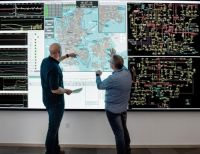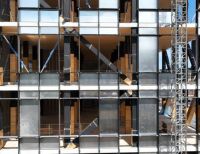Great energy savings
Poor indoor climate can affect our health, but it can also affect the environment – and our budgets. Buildings user around 40 per cent of the world's energy and account for about a third of the total greenhouse gas emissions, according to the UN Environment Programme.
In Europe, three out of four existing buildings are energy inefficient, meaning a large amount of energy is wasted. So there is great potential in using sensors and data to sniff out energy waste, and according to Davide Cali, Climify can help reduce energy consumption by up to 20-30 per cent on average.
"For example, many schools are heated around the clock, even though students may only be in the premises 30 per cent of the time," he says.
Climify can automatically turn down the heat when the room is empty and increase it again so that the temperature is comfortable when people return in the morning. At the same time, monitoring can help identify problems.
For instance, a kindergarten had issues with poor indoor climate, so the windows were constantly open while the heaters were on, wasting a lot of energy. Climify revealed that the ventilation system had been programmed to turn off every night at midnight but not to turn on again in the morning.
"So that just had to be entered into the system, and that way, they saved 30-40 per cent on their energy bill," says Davide Cali.
Trees rather than new ventilation system
This was exactly the starting point for Dennis Sonne Mogensen. He is a project manager in Hørsholm Municipality's Team Ejendom, where he digitalizes the municipality's buildings to eliminate energy waste and thereby save money and minimize CO2 emissions. And the indoor climate is a significant part of achieving that.
"Some of the biggest cost-cutting we can do is to reduce the operation of the ventilation systems as they are enormously expensive," says Dennis Sonne Mogensen and elaborates:
"Ideally, it should only run when there are people in the building, but if we turn it down too much, Climify allows us to see if we are compromising on the humidity, the CO2 concentration or the temperature. This way, we can see in great detail how our buildings perform right down to the individual room level.”
The municipality had received several complaints about the indoor air quality from teachers and students at Rungsted School, and they suspected that it was due to an outdated, malfunctioning ventilation system. However, Climify's data revealed that this was not the case. Instead, the problem was that some rooms got very hot on sunny days, so rather than replacing the ventilation system with a newer one, the municipality will instead plant trees in front of the windows, which provide shade and cool the building.
"It showed us that there is a big difference between the measured and the experienced indoor climate," says Dennis Sonne Mogensen.
Gives an echo
In the past, a complaint about the indoor climate would cause the municipality to try out a solution without knowing whether it actually succeeded. But with Climify they have a tangible way to measure it in real-time.
"It gives us an echo so that we can do something about it immediately and, for example, see that the values drop quickly when we open the window. So every time we measure something, we can see whether it results in a deterioration of the indoor climate or energy consumption or an intended improvement," says Dennis Sonne Mogensen.
His efforts have helped to reduce Hørsholm Municipality's CO2 emissions by 167 tons and save the municipality DKK 1,9 million simply by reducing energy waste in the buildings. Thus, Dennis Sonne Mogensen sees great potential in digitalizing the indoor climate in the future.
"I think we have only scratched the surface of the possibilities of this technology," he says.














